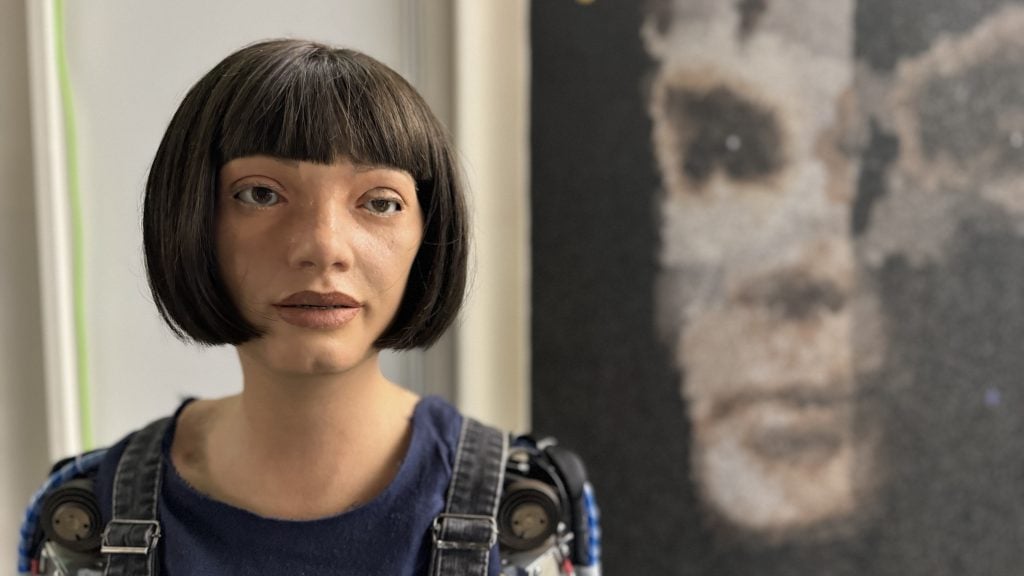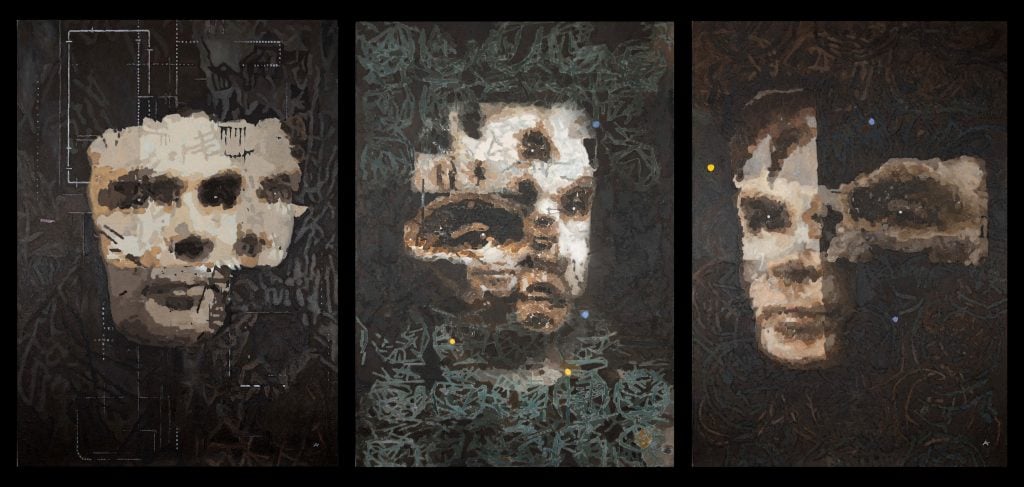Auctions
For the First Time Ever, a Humanoid Robot Is Selling Art at Sotheby’s
The artwork, which features portraits of Alan Turing, could fetch up to $195,000.

The artwork, which features portraits of Alan Turing, could fetch up to $195,000.

Richard Whiddington

Sotheby’s is set to sell an artwork by a humanoid robot. You read that right, after a febrile few years in which the art world has learned to subsume NFTs, A.I. outputs, and cryptocurrencies, the only wonder is that this first hasn’t come sooner.
The A.I. artist concerned is Ai-Da Robot, and to give the thing its due, she has been on an almost perpetual hustle for the past five years. Ai-Da has labored at the Great Pyramid of Giza, painted the British royal family, bamboozled crowds at the Venice Biennale and London’s Design Museum, featured in a video for pop act The 1975, and spoken to members of the House of Lords. With cultural caché firmly in the bag, now’s the time to hit the marketplace.
The piece chosen for the landmark occasion is A.I. God, a triptych in which Ai-Da answers the burning question: what does god look like to an A.I. robot? Alan Turing is the answer. He’s the prompt and inspiration, though, given all we know about how societal biases become baked into A.I. image generators, it would be unsurprising to discover that god is a clean-shaven white man with affectless expression. Such is Turing’s face that peers past us on each panel, scenes whose backgrounds are marked with dark, indecipherable lines, like walls besmirched in a hurry.

Ai-Da, A.I. God (2024). Photo: courtesy Sotheby’s.
The triptych previously appeared at a 2024 United Nations Global Summit that highlighted the positive aspects of A.I. and where Ai-Da received an audience with Princess Beatrice. Ai-Da called the work her tribute to “commemorate his [Turing’s] achievements and contributions to the development of computing and A.I.” Some version of a “draw your parents” kindergarten assignment.
It’s set to head to auction on Oct 31, thrown in with other contentious luminaries of the digital art world, such as Refik Anadol and Pak. It’s been given an estimate of £100,000 to £150,000 ($129,800 to $194,600). Other notable lots at Sotheby’s Digital Art Sale include XCOPY’s Doom Party, estimated between $800,000 and $1,500,000, and Matt Deslauriers’ Meridian 684, estimated between $15,000 and $20,000.
Aidan Meller, a British gallerist, dreamed up Ai-Da in 2019 with a Cornish robotics company providing the initial hardware and researchers from the University of Oxford developing it’s A.I. algorithms. Dressed to look like an art student with a bob cut and scruffy painter’s overalls, it’s named for the Victorian-era polymath Ada Lovelace and is, in essence, a robotic arm hooked up to a network of 10 trillion transformers programmed to make art. Tweaks to its software and the gradual expansion of its physical capabilities (it began using a palette in 2022) have seen Ai-Da’s output evolve.
Meller believes A.I. God meets our contemporary moment in which the threats of A.I. loom large. “The artwork seemingly suggests the struggles Turing warned we will face when it comes to managing A.I.,” Meller said. “Ai-Da Robot’s artworks continue to question where the power of A.I. will take us, and the global race to harness its power.”